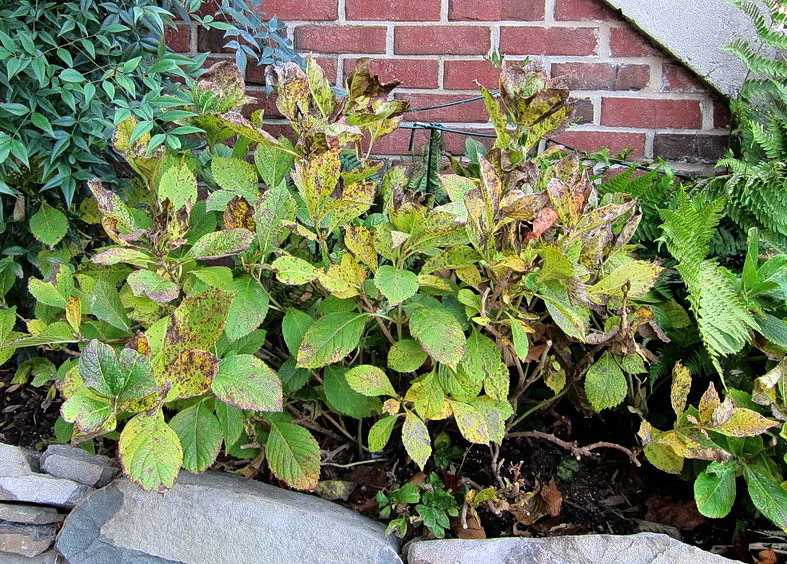What Does Hydrangea Leaves Turning Yellow Do?
The Hydrangea Leaves Turning Yellow Ideas
Table of ContentsIndicators on Hydrangea Leaves Turning Yellow You Need To KnowSome Known Questions About Hydrangea Leaves Turning Yellow.Getting The Hydrangea Leaves Turning Yellow To WorkThe Hydrangea Leaves Turning Yellow Statements
Hydrangea plants are recognized for their attractive blooms, but occasionally their leaves can transform yellow. This is typically an indicator that something is incorrect and the plant needs your help. There are numerous possible root causes of yellow fallen leaves on Hydrangeas, and the good news is most of them are simple to take care of. Below we'll cover the most common reasons for Hydrangea leaves transforming yellow and how to fix them.Hydrangea leaves transforming yellow can be a cause for issue. Hydrangea leaves commonly turn yellow when the plant is overwatered.
When the roots of a plant are submerged in water for extended periods, they start to asphyxiate and rot. This procedure cuts off the origins' oxygen supply, triggering the fallen leaves to turn yellow and ultimately pass away. Overwatering can additionally bring about other problems such as leaf decline, root damage, and fungal development.
If you think your Hydrangea is overwatered, the best service is to allow the dirt completely dry out completely prior to watering again. It's additionally an excellent concept to check the drainage of your pot or garden bed and make certain that water is not merging around the plant's roots. Hydrangea plants require well-drained soil to prosper.
A Biased View of Hydrangea Leaves Turning Yellow
You should also make sure that you are not watering your Hydrangea frequently. Watering as soon as a week must be sufficient, and extra frequently if the weather is hot and dry. Hydrangea leaves can also transform yellow if the plant is not getting enough water. This takes place when the plant does not obtain enough water, and the soil begins to dry.

This is known as "fertilizer shed," It takes place when the plant's roots are revealed to way too much fertilizer. The roots can't soak check my source up every one of the nutrients and come to be harmed. This damage creates the leaves to turn yellow and at some point die. Various other indications of plant food melt consist of brown or yellow fallen leaves, wilting, and stunted growth.
This will assist remove any kind of excess plant food from the roots of the plant. It's additionally a great concept to reduce the quantity of plant food you are making use of.
Some Ideas on Hydrangea Leaves Turning Yellow You Should Know

If your Hydrangea is infested with parasites, treating the plant with neem or horticultural oil is the finest solution. It's likewise excellent to get rid of any damaged fallen leaves from the plant (Hydrangea Leaves Turning Yellow).
To prevent spreading out the disease, ensure to decontaminate your scissors before cutting any ends. Hydrangea leaves can also turn yellow if the temperature emphasizes the plant. This typically occurs when the plant is revealed to extreme cool or warm. The leaves of the plant will transform yellow and begin to hand over.
If the temperature level worries your Hydrangea, you need to move the plant to an area where it will be secured from the severe cool or heat. You can additionally try to give the plant with some partial shade if revealed to guide sunlight. You can also attempt including mulch around the plant base to aid regulate the temperature.
Unknown Facts About Hydrangea Leaves Turning Yellow
When the plant's roots are submerged in water for as well long, they begin to rot. One of the most typical root rot signs is yellowing fallen leaves, as the fungus prevents the roots from taking in nutrients from the dirt.
Other indications of root rot include stunted growth, wilting, and leaf drop. Examine the roots of your Hydrangea if it has origin rot. If they are black or brownish, then they are probably rotten. If some healthy and balanced origins are left, you can attempt to see here save the plant by replanting it in a new pot with fresh soil.
If your Hydrangea is heavily impacted by origin rot, starting with a new plant is best. As Hydrangeas age, their leaves will gradually transform yellow and brownish prior to dropping off the plant.
You can assist the plant by ensuring it is getting adequate water and nutrients. One opportunity is that the plant is not obtaining enough water.